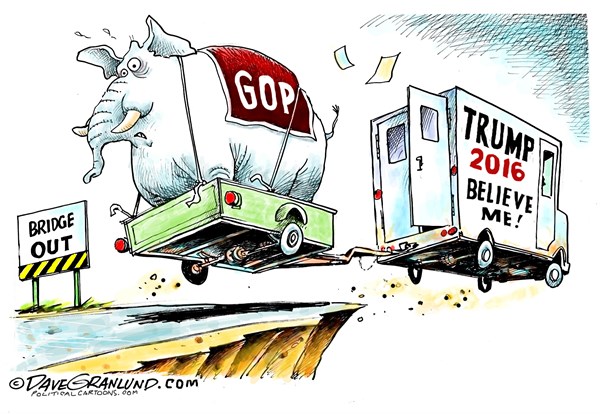
By Glynn Wilson –
Public opinion survey results in the wake of the national political party conventions over the past two weeks back up what knowledgeable commentators said at the time. The convention shows still matter in swaying public opinion at the margins, and the Democratic Party’s convention show and Hillary Clinton’s speech won over the Republican convention and Donald Trump’s speech in the political battle for the hearts and minds of Americans.
According to the latest Gallup poll on the subject, only 35 percent of Americans said they viewed the Republican Party better after watching their convention, while 52 percent said they viewed the party less favorably. At the same time, 44 percent of respondents viewed the Democratic Party more favorably.
In fact, 45 percent of Americans say they are more likely to vote for Hillary Clinton based on what they saw or read about the Democratic convention, while 51 percent are even less likely to vote for Donald Trump.
“The most anticipated event at modern political conventions is the presidential nominee’s acceptance speech,” Gallup says.
Surveys show that 44 percent of Americans gave Clinton’s speech a positive rating, saying it was either “excellent” or “good.” That is significantly higher than the 35 percent who rated Trump’s speech positively. In fact, as many Americans rated Trump’s speech negatively, saying it was “poor” or “terrible.”
“Trump’s speech was rated less positively than any Gallup has asked about since 1996,” the polling outfit says in its press release about the data. “The positive rating of Clinton’s speech is slightly below the historical average of 47 percent, but similar to Barack Obama’s 2012 acceptance speech. Obama’s 2008 speech got the highest percentage of positive ratings at 58 percent.”
Gallup’s Implications
“The Democratic Party’s convention left a considerably more positive impression on the American public than the Republican Party’s convention,” Gallup says in its analysis. “That is likely to aid the Democratic Party in its quest to win a third consecutive presidential election.”
In the short term, Gallup says, it appears the Democratic Party will leave the convention phase better off than before it began. Gallup tracking polls show Clinton’s post-convention favorable rating at 44 percent, up six percentage points from mid-July. That is much higher than Trump’s 32 percent favorable rating in the days after the Democratic convention.
At the same time, President Obama’s job approval rating is now up to 54 percent, tied for the highest it has been since early 2013, and Hillary Clinton and the Democrats honored the president in their convention and speeches and the president himself gave one of the most stirring speeches at the convention.
“These key election indicators suggest the Democrats are in a stronger electoral position than the Republicans, and Trump and the GOP have a little more than three months left to try to change that,” Gallup says.
Survey Methods
Results for this Gallup poll are based on telephone interviews conducted July 23-24 (Republican convention) and July 29-30 (Democratic convention), 2016, on the Gallup U.S. Daily survey, with random samples of approximately 1,000 adults each, aged 18 and older, living in all 50 U.S. states and the District of Columbia. For results based on the total samples of national adults, the margin of sampling error is plus or minus 4 percentage points at the 95 percent confidence level. All reported margins of sampling error include computed design effects for weighting. Each sample of national adults includes a minimum quota of 60 percent cellphone respondents and 40 percent landline respondents, with additional minimum quotas by time zone within region. Landline and cellular telephone numbers are selected using random-digit-dial methods.













